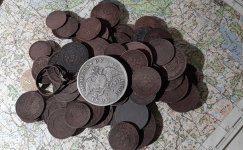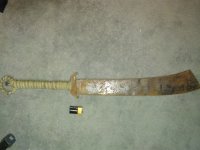I have several detectors that use multi-freq.'s. On my GTI2000 I can change to any one of
six (6) different one's; but there is no info. as to what the freq.'s are. I'am aware of needing
too or maybe wanting or needing to change if hunting close to someone else or if there is any
outside electrical interference. What i want to know is there one that is better for coin's or
gold or silver or is it just a crap shoot.
six (6) different one's; but there is no info. as to what the freq.'s are. I'am aware of needing
too or maybe wanting or needing to change if hunting close to someone else or if there is any
outside electrical interference. What i want to know is there one that is better for coin's or
gold or silver or is it just a crap shoot.











